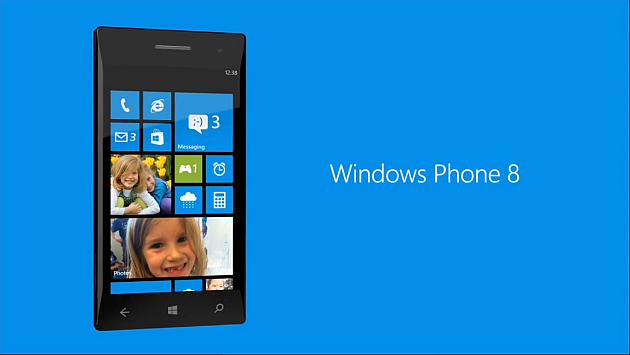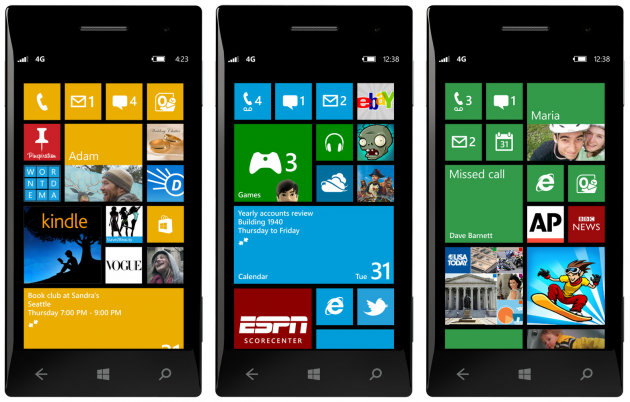Windows Phone Lags Behind Mobile Market. Can Enterprise Market Help?
The Windows Phone has always been in a tricky position. The original Windows CE which ran on small devices a few years ago never really took off and the revived Windows Phone operating system which morphs the look of the Windows 8.x Start screen to some extent has had similar issues.
So far the Windows Phone has only managed grab just 3 percent of the marketplace from the likes of Apple, Samsung, HTC and others. This market share also appears to be falling rather than growing which could well spell the end of the “Windows on any device” experiment from top-level management at Microsoft certainly in the consumer market.
The Windows Phone has been available for 4 years. With its complete lack of market penetration and declining market share in the consumer marketplace it is initially difficult to see where it goes from there. Even most fans of Microsoft software and the Windows environment have long since hoped off to buy an Android phone, Apple iPhone or Apple iPad.
The rapid take up of the release of the Microsoft Office for iPad is a testament to the fact that many Microsoft users are now using an iPad in some capacity with perhaps a work and / or home PC which still runs Windows. The availability of Office for the iPad made it easier for such people to open their Office documents and edit them with a real Microsoft editor rather than a “compatible with Office” app instead. However, those same users for the most part don't own a Windows Phone as well.
Apple, Samsung and several other competitors are busy duking it out for their own share of the lucrative smart phone and tablet market. Apple has the high ground but Samsung has breadth of their smart phone range which finds success at multiple market points from budget to high-end.
Touch-screen Not As Ideal For Windows As One Might Think
The attractiveness of the idea of bringing the Windows 8 or Windows 8-like OS experience from its touch-screen Start screen idea to a phone environment is a troubling one to begin with. Users haven't really fully embraced the idea of using touch-screens for their home computer which they use for important personal or business tasks. The constant finger-print smudges may be acceptable for iPads but laptops hold a different place in the hearts' of users who likely prefer to keep their viewing display clean. Many users also now have larger LED LCD monitors connected via HDMI cable which are not touch-screens at all and the cost of larger touch-screen monitors is still prohibitively expensive. This has been one of the reasons for the slower than expected adoption of Windows 8.x.
Windows Is Still A Keyboard & Mouse Input System
Windows is also essentially an app based system which relies on keyboard and mouse to operate. The apps have been designed since the beginning to work best with this approach so whilst a user might start switch to using a Start screen and a touch-screen on the Windows Phone with its tile-based Metro UI system, essentially the Windows environment still has apps that are not designed specifically for touch as the main, or only, interaction method available.
New Operating System Is Needed?
When consumers think of smart phones and tablets they do not think of Windows. Rather than one operating system for all devices, the company really needed to develop an entirely new operating system that is completely touch-based for the touch-screen mobile device market. This would make it difficult to provide compatibility for its existing Windows apps, but again, it would be better if these apps were redesigned from scratch for the new touch-based system rather than ported across in a clumsy way. It would also be an easier sell for consumers who never felt like the Windows system suited a touch-screen in the first place.
Embracing Enterprise To Succeed
The market share in the enterprise market starts worst for Windows Phone with just a 1 percent share, Android at 30 percent and Apple with 69 percent with their iPhone range (BlackBerry isn't included in the Good Technology report but their market share remains small and declining too).
Microsoft does have an opportunity within the Enterprise market. The Enterprise market is filled with large corporations that operate under different business conditions and with very different priorities than the consumer market does.
The user experience is more consistent for Windows Phone corporate users than it is for someone making the switch to Android or even the iPhone. Similar apps are available for the Windows Phone and the interface is not much different for users who are already familiar with Windows 8 (for Enterprise users back on Windows 7 the shift would be more significant). This fact makes it easier for busy IT departments to manage company issued Windows Phones; they could even wipe company information from devices when an employee is let go or fired.
Wider Choice of Windows Phone Handsets Over iPhone
The choice of handsets with the Lumia range of phones running Windows Phone makes it easier for the enterprise to offer different handsets to people holding more (or less) senior positions within the company. Starting with the budget-minded Lumia 535, rising to the Lumia 830 and going right up to the Lumia 930 for senior management without breaking the IT budget in the process. There is something for everyone here and given that Microsoft now owns the Lumia brand (formally Nokia) they can control the hardware much like Apple does but the Android brand is unable to do. This handset range is also much more flexible than the more expensive two-model iPhone collection from Apple.
Latest Windows Phone OS Improvements
The latest improvements to the Windows Phone OS are perfect for enterprise users. There is improved VPN support for secure access, secure S/MIME email access and security certificate management, enterprise-level Wi-Fi access, and a lot more besides.
The operating system itself can be altered by IT departments to only offer the apps that they want the user to have access to. In that way, a Windows Phone can be treated much like a corporate terminal to ensure a user can access what they need but not other apps which might be dangerous or damaging to install.
Improved Security
The latest Windows Phone supports FIPS 140-2 and is fully certified for this level of security. FIPS 140-2 represents an improved standard for data security which is essential for government agencies and enterprises that value their privacy and intellectual property which in an age of endless hacking of networks by hacker groups this should not be overlooked.
Other benefits with improved security include application sandboxing to protect apps from infection, remote locking and data destruction, complete device encryption, and proper rights management for files. With these features it is a simple matter to wipe data remotely before an employee leaves the company for the last time if they wish to keep the phone.
The upcoming Windows 10 for smartphones could be a game changer for the enterprise that want more control over what employees can do on devices issued by the company. iOS currently lacks most of these types of features and due to the plethora of handset and brand choices with Android phones it would be close to impossible to ensure these Enterprise-focused features worked across all Droid devices used for business. Therefore, what was once a negative in the consumer market is a net positive in the enterprise market for Microsoft with a new approach for the upcoming version 10 of Windows and Windows Phone.


